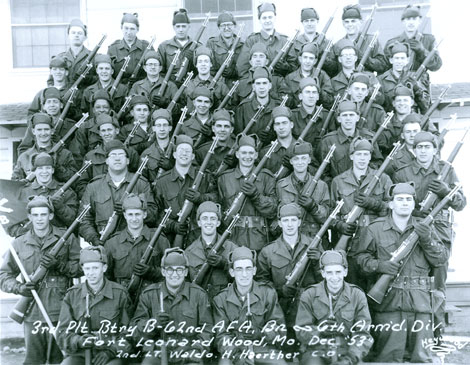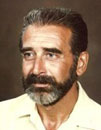 |
North
High School Wall of Honor
Roger William Raines
Class of June, 1950
|
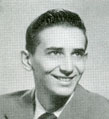 |
 |
|
Research done by Claradell Shedd, Class of 1953. Details supplied by
Roger Raines. |
| Roger William
Raines |
Roger graduated from
North High in the June, 1950 class. At the time of his induction,
his next of kin is listed as Mr. Paul Raines, 3300 5th Street,
Des Moines, IA. Roger William Raines's service number was US55388643.
http://ndmhs.com/pages/yearclass1950(2005.55).html.
Roger William Raines is pictured below in December
1953 with his Basic Training Class at Ft. Leonard Wood, MO.
He was in the Third Platoon, Battery B-62nd AFA. Br, 6th Armored
Division. Roger is in the front row at the far right end. Also
pictured is C. Bryce Peper, North High, Class of 1949. Bryce
is in the fifth row at the far left end.
|
|
|
|
| Roger William Raines |
 |
| Year |
x |
Rank/Event |
x |
Status |
 |
| June, 1950 |
x |
Graduation |
x |
North High School |
09/26/51
-
06/12/53 |
x |
US Army Reserve
Officers Training |
x |
Iowa State College; Ames,
IA |
| 11/19/53 |
x |
US Army/
Voluntary Induction
Basic Training |
x |
Polk Board #128; S# US55388643;
Eight weeks, 6th Armored Division,
Ft. Leonard Wood, MO |
| 02/06/54 |
x |
Ordnance Auto School |
x |
Twelve weeks.
Atlanta General Depot, Atlanta, GA |
| 02/06/54 |
x |
Personnel Replacement
Station |
x |
Two weeks;
Ft. Sheridan, IL |
06/06/54
-
09/25/54 |
x |
School Troop Detachment |
x |
3-1/2 months;
Fifth Army Area;
Ft. Riley, KS |
| 10/14/54
|
x |
14 days leave |
x |
Six days' travel time
to Camp Kilmer, NJ, embark to Argentia, Newfoundland |
| 10/15/54 |
x |
x |
x |
373rd Transportation Post
Command "C"; McAndrew Air Force Base;
Argentia, Newfoundland |
| 12/20/54 |
x |
US Army/PFC |
x |
Promotion |
| 04/13/55 |
x |
Temporary Duty |
x |
Four weeks; Goose Air Force Base;
Goose Bay, Labrador |
| 05/15/55 |
x |
Temporary Duty
to sub port |
x |
Four weeks; Sondrestom Air Force
Base; Greenland |
| 06/15/55 |
x |
Temporary Duty |
x |
Four weeks; Thule Air
Force Base; Greenland |
| 07/15/55 |
x |
New home base |
x |
7278th GU Transportation Terminal
Command (NEAC); Pepperrell Air Force Base; St. Johns, Newfoundland |
| 07/22/55 |
x |
Temporary Duty |
x |
Six weeks; Ernest Harmon Air Force
Base; Stephenville, Newfoundland |
| 09/05/55 |
x |
To home base |
x |
10 days; Pepperrell Air Force Base;
St. Johns, Newfoundland |
| 09/15/55 |
x |
Temporary Duty |
x |
Three weeks; Thule Air Force Base;
Greenland |
| 10/11/55 |
x |
To home base |
x |
Pepperrell AFB, St. Johns,
Newfoundland.
Awarded Good Conduct Medal. |
| 10/21/55 |
x |
Honorable Separation from
Military Service |
x |
One week; Ft. Sheridan,
IL |
| 10/28/55 |
x |
Home |
x |
In Des Moines, IA |
| 10/31/61 |
x |
 |
x |
Honorable Discharge; PFC |
| Thereafter |
x |
Civilian |
x |
Career |
|
| Origins of the Northeast Air
Command (NEAC) |
|
In August of 1940, President Roosevelt and British
Ambassador Lord Lothian began negotiations to lease territories
in Newfoundland and the Caribbean on which to build military
bases for defense against German aggression. This resulted in
the creation of the Canada-United States Permanent Joint Board
on Defense on September 2, 1940, allowing 99-year leases in
exchange for 50-over age destroyers. Detailed lease agreements
were not signed until March, 1941, even though site selection
had begun in March, 1940 and field work started in October,
1940 for the first base near St. Johns, Newfoundland. U.S. troops
began arriving on January 15, 1941.
In April, 1941, Secretary of State Cordell Hull and Danish Ambassador
Henrik Kauffmann signed the Defense of Greenland Agreement,
approved by President Roosevelt on June 7, 1941, in which the
United States agreed to take over the security of Greenland.
Airfields or weather stations were built at Narsarssuak Airfield
(Bluie West One) (BW-1), Angmagssalik (Bluie West Two) (BW-2),
Gronnedal Airfield (Bluie West Nine) (BW-9), Sondrestomfjord
(Bluie West Eight) (BW-8), and Thule (Bluie West Six) (BW-6).
On August 7, 1941, the heavy cruiser Augusta carrying President
Roosevelt arrived at Little Placentia Bay near Argentia, Newfoundland
to meet with Sir Winston Churchill who had sailed on the HMS
Prince of Wales. The purpose was to discuss strategies and logistics
if the United States entered the war. Talks started on August
9 and were completed on August 12. The British Press referred
to this as the Atlantic Charter though neither party had officially
signed it.
The mission of Ft. Pepperrell, the base at St. Johns was to
conduct anti-sub patrols, convoy over-flights of shipping lanes,
and patrol for U-boats. The naval station and naval air base
at Argentia provided anti-sub patrols and task force escorts.
The largest American task force in the Atlantic was based there.
Nearby Ft. McAndrew's main function was to defend the naval
and air base with infantry, seacoast artillery, anti-motor torpedo
boat and anti-aircraft artillery. The base at Stephenville in
western Newfoundland had similar missions and the large airfield
was a stopping and refueling point for USAF aircraft crossing
the Atlantic. The bases in Greenland were also stopping points
and the weather stations gave the allies a strategic advantage
over the Germans in battle planning and was a decisive factor
in D-Day.
With the end of WWII, the importance of the North Atlantic bases
diminished considerably, but with the advent of the Korean War
and the ensuing cold war era, these bases regained their value
for national defense.
These bases had been in two different commands, but in October,
1950, they were organized into a major command designated as
Northeast Air Command (NEAC). Its mission was to provide RADAR
cover over the northwest Atlantic, fighter interceptor, and
to support U.S. Army anti-aircraft defense forces. NEAC's area
was Newfoundland, Labrador, Northeastern Canada, and Greenland.
The Radar stations were known as the Pinetree Line and later
the Dewline. It should be noted that Thule, Greenland is the
midpoint on the great circle between Moscow and New York City.
The name NEAC was discontinued in April, 1957, and the bases
were divided into other organizations. Base closures started
in 1960, and today Thule is the only operational U.S. air base
in the area.
|
|
| Fort
Leonard Wood, Fort Riley, Fort Sheridan; bar code for this specific
Raines website page |
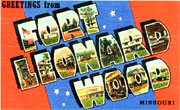 |
 |
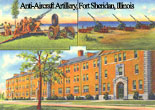 |
 |
|
 |
|
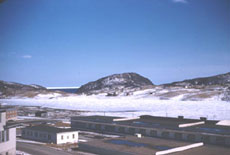
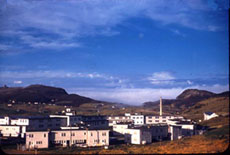
|
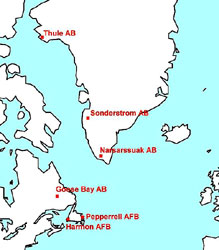 |
| Northeast
Air Command Area/St.Johns |
|
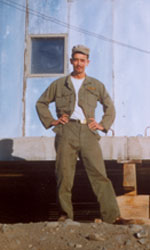 |
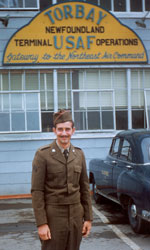 |
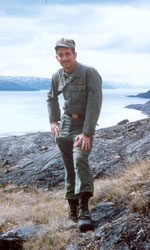 |
Barracks/Thule
AFB, Greenland;
June, 1955 (Midnight) |
Near St.
Johns, Newfoundland;
7-8/55 |
Sub Port
Sondrestrom AFB,
Greenland; May, 1955 |
|
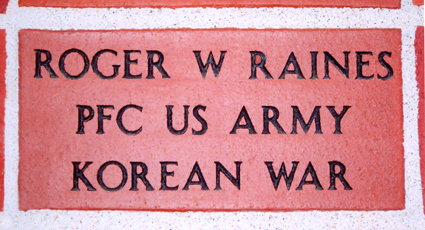 |
above:
Brick Memorial Wall;
Gold Star Museum, Johnston, IA |
|
Roger
William Raines
PFC
6th Armoroed Divison
5th Army
United States Army |
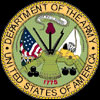

|
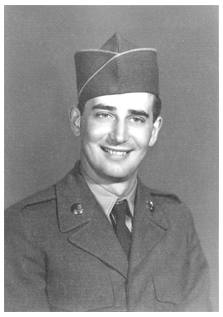
|


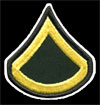
|


Army Good Conduct Medal
|
|
|
|
| 04/24/10:
Presently residing in West Des Moines, IA. Died 01/17/18. |
| Music:
"Wind Beneath My Wings" |
Home
|
Back/allyears |
WWI |
WWII |
Korea |
Vietnam |
Afghanistan/Iraq |
Lyrics
|
Refs/Awards |
Contact
©2018-csheddgraphics All rights reserved.
All images and content are © copyright of their respective copyright
owners. |
|

